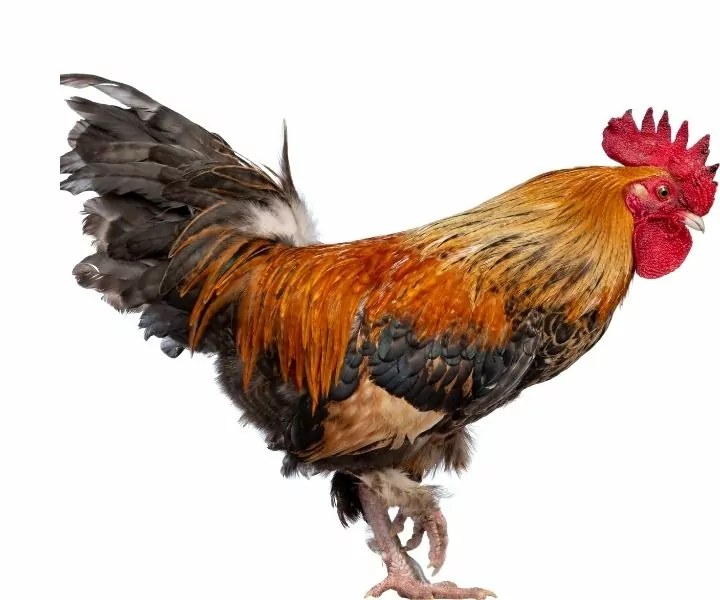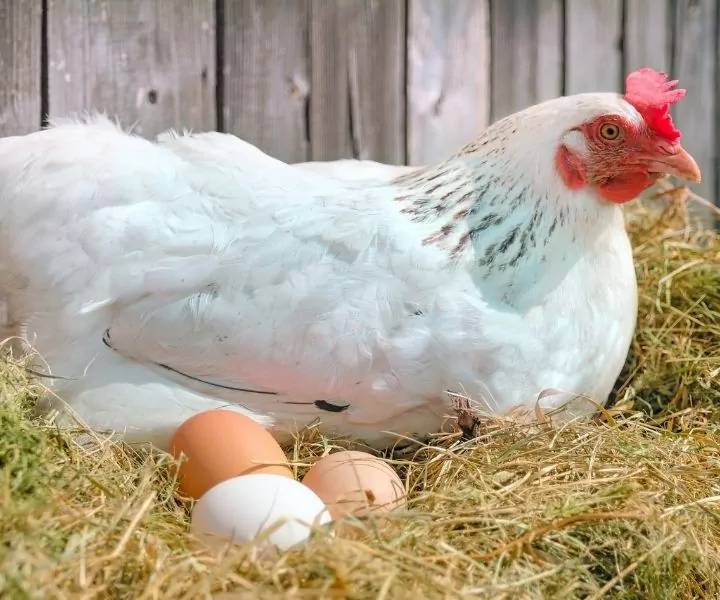Infectious coryza is an acute upper respiratory disease caused by the bacterium Avibacterium Paragallinarum. By definition, coryza means ‘catarrhal inflammation of the mucous membranes in the nose,’ which in humans is to be known as the ‘common cold.’

However, it is typically more severe in chickens and can otherwise be known as ‘IC, roup, pip, catarrh.’ It was first recognized in the 1930s and caused economic losses through significantly decreased egg production, poor growth in the young, and increased culling.
It is recognized as a worldwide disease. However, in developing countries, coryza can be complicated by other disease pathogens such as mycoplasma and Pasteurella, which cause septicemia and arthritis, resulting in increased mortality.
In India, infectious coryza follows salmonella as the second most crucial bacterial disease associated with mortality. In the U.S, it is primarily seen in the southern states; however, outbreaks have been noted in the northeast.
Is Coryza a virus?
Coryza is an infectious bacterial disease caused by the bacterium Avibacterium Paragallinarum. It is a gram-negative, non-motile microaerophilic rod that is highly transmissible, with high morbidity rates but lower mortality rates (reported up to %20).
The definition of coryza is used to refer to any respiratory disease affecting chickens, so it is important to discern the definition from its historical usage.
For example, in countries such as the U.S, it is mostly observed in pullets and laying hens, and in lower-income countries, it is often noted in young chicks less than three weeks of age.
While there are reports that a similar disease occurs in pheasants and guinea fowl, there are doubts if these cases result from a different aetiological agent.
The Signs of Coryza in Chickens
The symptoms of coryza include:
- Purulent nasal and ocular discharge
- Facial swelling
- Sneezing
- Dyspnoea
- Swollen wattles
- Weight loss
- Poor appetite
- Decrease in egg production (10-40%)
In milder infections, lethargy and nasal discharge may be the only clinical signs of infection. As the severity of illness worsens, the swelling of either one or both infraorbital sinuses and surrounding tissue edema may prevent the eyes from opening. This edema can extend down the mandibles and into the wattles, normally receding within 10-14 days; longer if there is secondary infection.
Differential diagnosis includes Fowl Cholera, Mycoplasmosis, Swollen Head Syndrome, Avitaminosis A, Orthinobacteriosis, Newcastle Disease, Laryngotracheitis, Avian Influenza, and Infectious Bronchitis.
Epidemiology and Transmission
Chronic infections or asymptomatic carrier birds are usually the reservoirs for infection, contributing to its difficulty in controlling outbreaks. Transmission occurs through aerosol droplets, direct contact, or infected drinking water.
It is not passed through eggs. The incubation period (the time between infection and demonstration of first clinical signs) is one -three days, with clinical signs being apparent for two-three weeks. The entire flock is affected within ten days, and the recovered birds can become carriers of infection.

Avibacterium Paragallinarum survives two-three days outside of the bird and is killed by heat and disinfectants. Therefore, farms without adequate management and separation are likely to experience repeated outbreaks.
Predisposing factors that increase the likelihood of infection are other viral and bacterial infections, stress, and poor husbandry.
An essential factor to note is that infectious coryza is not a zoonotic disease and doesn’t have public health significance.
Explaining the Post-Mortem Lesions
Post mortem lesions can include thick exudate in the infraorbital sinuses, which can consolidate with chronicity; abscessation of the wattles; eyelid adherence and conjunctivitis; tracheitis; air sacculitis; and subcutaneous edema of the face and wattles.
In a necropsy examination of six 16 week old chickens from a flock of 500, who presented at the Texas A&M Veterinary Medical Diagnostic Laboratory (TVMDL) in Gonzales had a week-long history of swollen sinuses and respiratory abnormalities, each of the six birds was described as having discharge in one sinus. In addition, the exudate was thick and ‘honey-like.’ Only two birds had an abscessed wattle, and no other lesions were observed.
Histopathic lesions include edema and erosion of the respiratory mucosa and edema. Pneumonia is only seen very rarely if there are other pathogens also involved.
How is Coryza Diagnosed?
Bacterial culture
For direct isolation, the pathogen must be swabbed from the sinus exudate, the trachea, or the air sac during the acute stage of infection. The sample should be placed on a blood agar plate with a previous colony of staphylococcus aureus that will act as a feeder colony for the A. Paragillarium.
A catalase-specific test is essential, as non-pathogenic catalase-positive organisms are evident in both healthy and diseased chickens. Isolation of gram-negative, catalase-negative, pleomorphic organisms is diagnostic with a history of rapidly spreading disease.
PCR test
PCR testing of live flocks is reported to provide higher accuracy in results over bacterial culture. They also offer rapid results within six hours and recognize all A. Paragillarium isolated.
A benefit of this test over bacterial culture is that studies have shown that samples can be stored up to 180 days after at -20 degrees Celsius (-4 degrees Fahrenheit), and the samples will remain accurately diagnosed.
However, isolation and culture can only be stored for up to three days, which means in cases with poor sampling or delayed transport, they may yield better results.
Hemagglutination Inhibition (HI) Test
The page scheme is classically used for serotyping immunotype specificity, which groups A. Paragallinarum into three serovars: A, B, and C. There are three main tests for HI that have been described; simple, extracted, and treated tests.
The simple is appropriate for serovar A, and the extracted and treated appropriately for serovar C. However, the tests are limited when it comes to serovar B. Consequently, it is not possible to adequately suggest serological assays as a robust and complete diagnosis for this reason.
Treatment and Control of Coryza
Infectious coryza treatment involves acute antibiotic treatment to aid recovery of affected chickens and appropriate management practices and vaccination. Isolating the birds into a safe and warm area, and limiting stress, is the first step.
It is important to note that antibiotic treatment is dependent on the laws of a specific country. Hence, it is vital to be aware of the regulations before treatment is initiated. Early treatment is absolutely essential, so antibiotics should be placed into drinking water until the medicated feed is available.
Oxytetracycline, erythromycin, and various sulfonamides are typically effective, and fluoroquinolones are bactericidal, which may help prevent carriers of infection.
In more severe outbreaks, an infection may reoccur, so it is essential to monitor clinical signs even after treatment has stopped.
Preventative Measures Against Coryza in Chickens
All-in, all-out policy
Management and husbandry practices that comprise all-in, all-out policies help to prevent and control disease outbreaks. This involves not mixing different groups of birds and instead of replacing whole groups of animals instead of adding individuals to an already existing flock.
Farms without this practice are likely to see repeating outbreaks. However, if new chickens are being added to an existing flock, then a 30-day quarantine period is essential to prevent the spread of disease.
Cleaning the premises thoroughly between restocking is important, and especially if there has been a disease outbreak, allowing the facilities to stay empty for two-three weeks to let the causative agents to die off is recommended.
Vaccination
Commercial vaccines are widely available internationally. In addition, there is a trivalent inactivated vaccine that protects against serovars A, B, and C. Chickens can be vaccinated for infectious coryza from five weeks of age onwards, and the interval between the two doses of vaccines should be four weeks.
In areas where outbreaks are common, vaccinations should be completed approximately four weeks before they typically occur. It is imperative that they are vaccinated if they are to be raised in an already infected premises.
However, an emerging problem is that the global vaccine companies base their standard production of vaccinations on internationally established strains of A. Paragallinarum.

But, it has become apparent that these vaccines aren’t protecting against local variants in some cases. So, in severe outbreaks, autogenous vaccines are often used, where the microorganism is isolated, explicitly targeting the specific strain that is causing the disease.
Good husbandry practices
Ensuring that the flock has warm housing in winter that is draft-free, that they are not over-crowded, their nutrition is optimal, and that sanitation practices are exemplary will help as a preventative measure in outbreaks. It is also paramount to reduce stressors, as stressed animals have increased susceptibility to infections.
Summary
Infectious coryza is a complicated disease that still requires more research and investigation to optimize treatment, control, and prevention. In addition, it is a highly contagious disease process, causing mortality in up to 20% of cases, having a significant adverse impact on poultry production.
Treatment involves antibiotic therapy, and a mainstay of prevention consists of the practice of an all-in, all-out management system. Vaccinations are also available and widely used. More research needs to be conducted on the serotyping to determine whether the serological variance of Avibacterium Paragallinarum could be responsible for vaccination failures.
